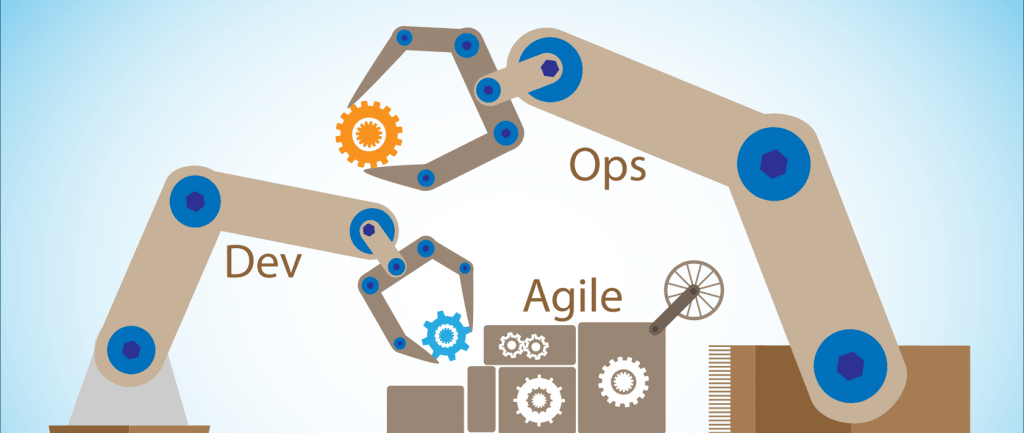When it comes to achieving Continuous Delivery and DevOps for Oracle to make your organisation faster and more agile, you have some choices to make. We look at the pros and cons of 5 of the most popular implementation options, if your organisation is based on Oracle.
In previous blog posts we showed how to overcome the 5 main challenges in delivering end-to-end Oracle deployments, and how smart Oracle-based enterprises gain agility, speed and value, and 7 keys to achieving DevOps & Continuous Delivery with Oracle.
In this post, we explore the most common implementation options, if automation, Continuous Delivery and DevOps are on your to-do list. It may surprise you that many projects fail because of poor implementation choices, not because the people weren’t smart enough, the tools sharp enough or the budget big enough.
Here are the 5 most common choices faced by organisations based on Oracle solutions.
1. DOING IT IN-HOUSE
On the surface, running a new Oracle project in-house has a lot going for it: it should be easier to manage, and it should cost less to complete. If you don’t have enough expertise, you can bring a couple of Oracle specialists on board or arrange some specialised Oracle training for your staff. Even if you have to contract a specialist or two at a critical time in the project, it won’t break the bank.
Building Oracle environments manually is another way to save money: some of your people already know how to do that, or can learn on the fly by reading some chunky manuals, and you don’t have to buy any extra tools for Continuous Delivery automation. You can also avoid the difficult transition to DevOps principles, if you haven’t made it yet.
Going in this direction tends to be false economy though, because manual builds take much longer to build (months compared to days) require more people and are wide open to human error. This is the opposite of what automation and Continuous Delivery achieve, so this option is the least likely to deliver economical or quality outcomes. It should only be considered if you have plenty of in-house resources, the money to contract and manage more if you need them, and if you feel that Continuous Delivery automation adds little or no benefit in your situation.
2. DEVELOPING AN AUTOMATED DELIVERY TOOLKIT IN-HOUSE
This would be an ambitious project even for the most capable enterprises, and difficult to manage and continually improve and upgrade, as new Oracle functions or software upgrades need to be accommodated. In the long term, performance and functionality would most likely fall behind, and it’s unlikely that the return on your investment will be positive.
Building a fully-featured toolset for Continuous Delivery automation is really only an option if you have a genuine depth of advanced Oracle skills in-house, and the experience to develop sophisticated automation tools from scratch. Even then, maintaining and keeping it up-to-date will pose major challenges.
3. CONTRACTING AN ORACLE SYSTEMS INTEGRATOR (SI)
This is a popular approach especially for large enterprises, because the SI brings expert technicians and project management experience to the project. Frequently, SIs add quite a few people to a project too. As you get to know them better, you may find that many of their people are generalists, and the SI will need to hire additional Oracle specialists anyway.
Some SIs are comfortable building Oracle environments manually, while others may offer to build some automation tools for you, if you express misgivings about manual builds. If you choose either of these, you may find the same drawback as in 1 and 2 above, and find your costs go up as well.
A better option might be to choose an SI who is familiar with and uses one of the advanced automation tools, so you get the best of both worlds. Such an SI could also bring in the Oracle specialists who designed the tool, to fill in any gaps they or you may have initially.
4. BUYING AN AUTOMATION TOOL
Buying an advanced tool for Continuous Delivery automation is a good option for Systems Integrators or enterprises with extensive in-house Oracle expertise, who are used to building and managing complex Oracle environments. The best option is a toolset that automates build, management and trouble -shooting of environments, and is mature, having been tested in multiple situations (technologies and verticals). Such a toolset should be available to test in your situation before you commit, so you can ensure that it delivers its claims.
So far, there aren’t many to choose from, so you need to make sure that the vendor has the capacity and commitment to improve the product and keep it up-to-date. You’ll gain an additional benefit when you buy a toolset from experienced Oracle specialists: they can train your staff in its use, which will add long term value and flexibility, along with saving you time and money.
5. CONTRACTING ORACLE SPECIALISTS
If you choose a team with proven Oracle experience who has a track record of developing advanced automation and diagnostic tools, you should get the project completed with lower overheads, in less time and end up with a higher quality outcome.
The right team will take responsibility for project success, and will work seamlessly with your internal team and SI’s people to achieve it, while removing the complications of multiple SMEs. This is the right option if you want the peace of mind of quality environments and projects, delivered on time and on budget, and don’t have limitless resources or time.






